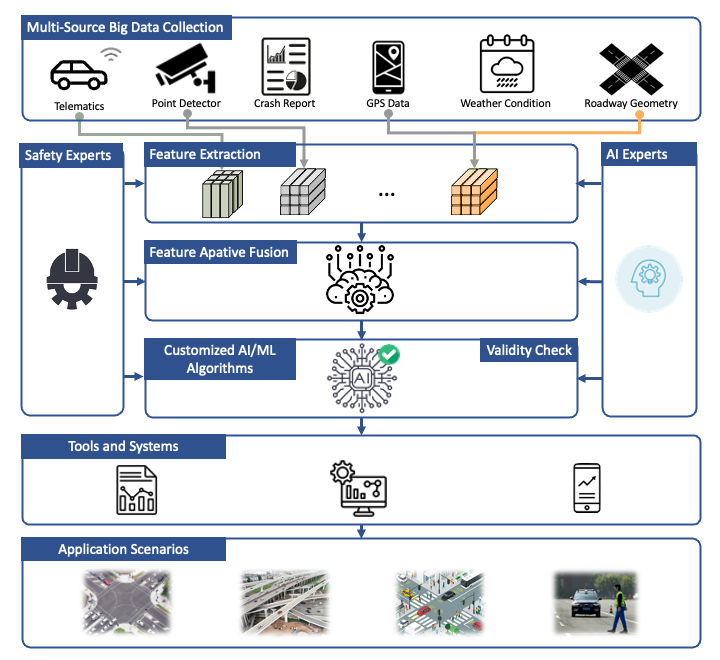The need to improve road safety performance for all road users is clear, particularly for vulnerable road users (such as pedestrians and cyclists), and users of micro-mobility services (such as e-scooters). The optimization of investment by local and state agencies to maximize lives saved and injuries reduced takes on even greater importance when financial resources are constrained. Unlocking the broader sustainable benefits that come from active transportation modes also requires an understanding of the safety performance of infrastructure. The absence of low-cost data, safety performance metrics, and prioritized investment options make it difficult for agencies to understand the business case for safer roads and to measure progress.
This research will investigate the use of artificial intelligence (AI), machine learning (ML) and Big Data (BD) to provide the information needed to power key data-driven, public and proprietary safety analysis tools as well as predictive and other systemic safety tools. The availability of large-scale and consistently collected data across the entire road network will improve the visibility of existing network conditions with a focus on road and exposure features influencing the safety of all road users. This low-cost and consistent data can then inform and accelerate the investments needed to support safe system outcomes with a particular focus on modal priority and the needs of pedestrians, cyclists, and new-mobility users. Even with the introduction of connected and automated vehicles (CAV), investments to ensure an efficient and optimal interaction between all road users will continue to need to prioritize vulnerable road users.
The research will build on the AI innovations under development globally for Road Assessment Programs (RAP) in other countries. AI-RAP captures the advances in AI, ML, vision systems (street and sky), light detection and ranging (LiDAR), telematics, and other data sources to deliver critical information on road safety, crash performance, investment prioritization, and RAP’s Star Rating of roads for pedestrians, cyclists, motorcyclists, and vehicle occupants. The accelerated and intelligent coding of these attributes can provide significant savings and deliver the scale and frequency of data collection and analysis to support comprehensive performance tracking over time.

Figure 1. Framework for traffic safety analysis incorporating unconventional data sources.
Related Publication
